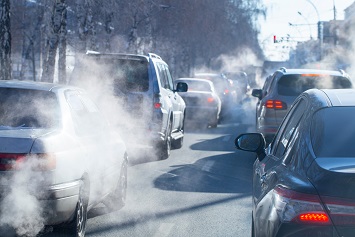In June 2019, the EPA’s Office of Enforcement and Compliance Assurance announced its six National Compliance Initiatives (NCIs) for fiscal years 2020 through 2023. Before the Trump administration, the Agency referred to this program as its National Enforcement Initiatives. Regardless of the title, the program identifies sectors or types of activities that are in need of heightened enforcement because violations have had particularly hard impacts on human health and the environment. The 2019 announcement included a new initiative: stopping the manufacture, sale, and installation of aftermarket defeat devices for emissions controls on vehicles and engines.
The phenomenon of defeat devices is well known to the American public following the Volkswagen scandal of 2015, which cost the company nearly $30 billion in fines and vehicle buybacks. If the government intended to send a message with that massive penalty, the designation of the violation as a National Compliance Initiative suggests that more needed to be done.
In fact, since 2015 and more recently in the first quarter of 2020, the EPA has indicated that it is aggressively pursuing companies that violate Clean Air Act (CAA) provisions related to defeat devices and tampering with emissions controls. For example, in April 2020, the EPA said it has resolved more than 50 cases specifically addressing companies and individuals who have manufactured and sold both hardware and software specifically designed to defeat required emissions controls on vehicles and engines used on public roads, as well as on nonroad vehicles and engines.
The absence of vehicle emissions controls or emissions controls that are rendered nonfunctional have major emissions consequences. For example, tuning, a term used for hacking into and modifying software and calibration files so that emissions controls are fully deleted, can increase a vehicle’s particulate matter emissions by 40 times and nitrogen oxide (NOx) emissions by more than 300.
The CAA has two prohibitions related to vehicle emissions controls—one related to defeat devices and the second to tampering with emissions controls.
Defeat Devices
CAA Section 203(a)(3)(B) states:
“The following acts and the causing thereof are prohibited—For any person to manufacture or sell, or offer to sell, or install, a part or component for a motor vehicle, where a principle effect of the part or component is to bypass, defeat, or render inoperative any emission control device, and the person knows or should know that such part or component is being offered for sale or installed for such use or put to such use.”
As noted, the NCI focuses on enforcing the CAA prohibitions against the “manufacture, sale, and installation” of defeat devices. In its April announcement, the Agency cited three companies for violating the prohibitions. In one case, an EPA administrative law judge ordered a “major web-based distributor of diesel defeat device products” to pay a $7.058 million penalty for 13,928 violations of the aftermarket defeat device prohibition. Another company was assessed a civil penalty of $52,284 for selling and installing approximately 2,833 delete products for diesel-powered trucks. The relatively low amount of the penalty was calculated based on the company’s “demonstrated inability to pay a higher amount.”
Tampering
CAA Section 203(a)(3)(A) states:
“The following acts and the causing thereof are prohibited—For anyone to remove or render inoperative an emission control component on a certified motor vehicle or engine prior to sale or delivery to ultimate purchaser, or for anyone to knowingly remove or render inoperative any emission control component on a certified motor vehicle or engine after sale and delivery to the ultimate purchaser.”
Compliance with this section, as well as its enforcement, has been a challenge over the years, particularly with regard to service stations that work on vehicles with faulty or absent emissions controls or when the vehicle owner requests that the emissions controls be disabled.
The EPA’s authority to enforce against tampering was substantially expanded in the 1990 CAA Amendments. In 1991, the Agency issued a memo that EPA staff still refer to when discussing the tampering prohibition. The memo provides the following general principles:
- When determining whether service performed on an element of an emissions control system was illegal tampering, the EPA typically compares the element after the service with the element’s fully functioning certified configuration, rather than with the element’s configuration before the service.
- Where a person is asked to perform service on an element of an emissions control system that has already been tampered, the EPA will generally take no enforcement action if the person restores the element to its certified configuration or declines to perform the service.
- The memo includes examples of actions that are considered tampering. Additional enforcement scenarios are provided in a more recent (April 2019) EPA presentation on tampering.

